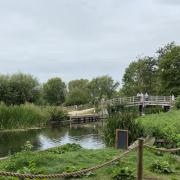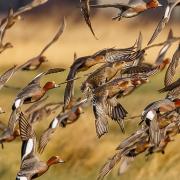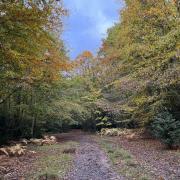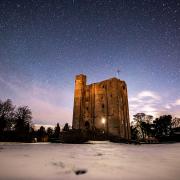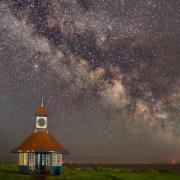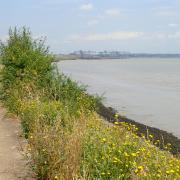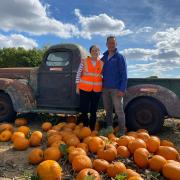I set out on a chilly winter's day to explore the history and wildlife of Wallasea Island [hazy.longingly.merit], now maintained as a stunning wetland by the RSPB. Pulling my wool hat down against the cold wind, I follow the coastal path atop the earth embankment, frosted white with sparkling rime. Across the steely River Crouch I spy the remains of the old sea wall that once protected this low-lying island from flooding.
Built in the 19th century, the inland wall and network of drainage ditches allowed Wallasea to be claimed for farmland. Now abandoned to the tides once more, the ghostly remnants are a reminder of the island’s constant battle against the encroaching sea.
Reedbeds are on my right, the dry stems creaking eerily in the wind, as I make for the first of many bird hides which ornithologists travel to from miles around. Little egrets stalk through the reeds; their white forms vivid against the muted winter backdrop, their necks tucked back like a snowy cravat. I think of how Dutch settlers drained these lands in the 15th century, and how a school was eventually opened on the island in 1879 to accommodate a growing population – lasting for only 20 years before the land returned to pasture. During both World Wars, the island was under the plough.
Passing by frosted meadows where sheep once grazed, I spot a robin perched on a fence post. He sings without inhibition and reminds me of one of my favourite short poems, published in an old book called The Leisure Hour (1896):
A little robin, sweetly singing,
Came to my window on a Christmas Day.
And from his little throat came ringing,
A most melodious lay.
Where horse and men once worked the land together, now only birdsong and the keening wind disturbs this winter silence.
RECOMENDED READING
- Rewilding Essex on Wallasea Island
- 12 of best countryside autumns walks across Essex
- Essex wildlife reserves: 9 of the prettiest spots
Descending from the sea wall, I flush a flock of lapwings from a winter field, their iridescent tumbling flight brightening the gloom. Flocks of dunlin, plovers and wintering wildfowl (including my favourite, the brent goose) also line the silty riverside, surrounding the skeletal skiffs. Boats, left long ago, poke their broken ribbed hulls through saltmarsh like that of the oysters once dredged from these waters. Skirting a reed-fringed ditch, I quicken my pace, the thought of The Plough and Sail’s [shaver.tasks.goose] warm hearth spurring me on against the bitter wind.
Only a short drive away to Paglesham, a chocolate-box riverside community, I duck into the weatherboarded pub’s smoky warmth and find a snug spot by the fire. As I sip my pint, I reflect on the island’s ever-changing story - the ebb and flow of nature, people and fortunes. Wallasea’s wild spirit endures, shaped but never tamed by the forces of tide, time and history.
This column uses what3words, an easy way to identify precise locations. Every three square metres on Earth has its own unique combination of three words. To use, download the free app, or visit what3words.com




